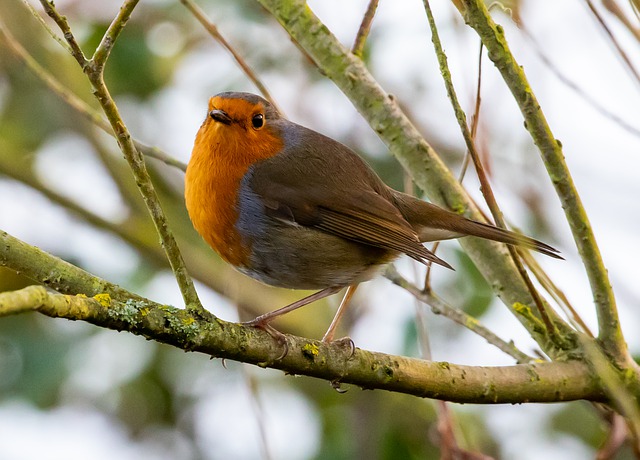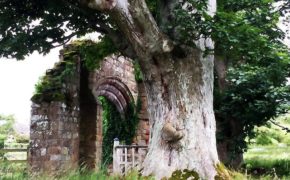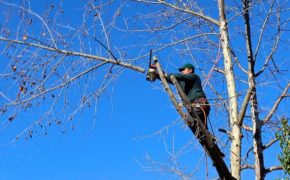
Get a quick no obligation quote It’s free and will only take a jiffy!
A Guide to Protecting Trees Using a Tree Preservation Order
Trees play a vital role in society, and in life in general. They support biodiversity, help fight climate change, and are known to boost mental well-being. With such an important role to play, it is essential that trees are given the protection they deserve. Whilst campaigners such as the Woodland Trust and Friends of the Earth are doing a stellar job when it comes to protecting the UK’s trees, it’s important that everyone helps by doing their own personal bit. One way we can do that is by protecting and saving the trees in our local areas. Here’s how.
Trees are under constant threat. Housing development, high speed railways… there is so much going on in society that can increase the vulnerability of trees.
The good news is that there are various things we can all do on a personal level to protect and save the trees in the areas in which we live and work. If there is a tree or group of trees that matter to your local neighbourhood, then it is wise to try to secure their protection whilst they are still healthy and do not face the threat of removal. This is something that can be done using a Tree Preservation Order.
What is a Tree Preservation Order?
A Tree Preservation Order (TPO) is a legal method of preventing harm to trees. A TPO makes it a criminal offence to cut down, top, lop, uproot, wilfully damage or destroy protected trees without written consent from the local authority. It also creates a duty to replant any tree that is removed without consent.
The overall aim of a TPO is to protect the amenity value offered by a tree. But because trees play a vital role in protecting the environment, a TPO offers valuable benefits to the local environment too.
What trees are protected by a Tree Preservation Order?
A TPO can be requested by anyone and, if granted, it can have instant provisional effect. You don’t have to be the owner of the land where the tree is located to request a TPO.
TPOs are designed to protect any type of tree. They could cover a single tree, a group of trees, an area planted with trees, or an entire woodland. Privately owned trees are also covered, providing they offer public amenity benefits.
TPOs are used to generally preserve trees, but they can also be applied at times when new developments are posing a specific threat. Where a TPO is in place, it can influence planning decisions. Any proposed development would be obliged to consider trees with TPOs as part of the project works. This process ensures that the public is kept fully in the picture when it comes to any threats to trees.
When a new planning proposal is put forward, the local authority is supposed to consider creating a TPO to secure the protection of any important trees. However, there is no guarantee that they will do this, so you may wish to request a TPO yourself.
Once in place, a TPO gives local authorities legal jurisdiction to prosecute anyone who fails to comply with order. Fines for non-compliance can be considerable.
If there is a hedgerow that you are looking to protect, this will be covered by the Hedgerows Regulation 1997. Larger areas planted with trees that extend beyond the protection of a TPO could be covered by Conservation Area status.
The Friends of the Earth briefing, Protecting trees, woodlands and hedgerows: a practical guide, provides further information about the different types of protection available for trees.
How to find out if a tree is already protected by a TPO?
TPOs are recorded on local authority registers, helping to build a clear picture of the diversity of trees UK-wide.
You can check your local council’s website for a list or map of trees in the area protected by a TPO. Alternatively you can search data.gov.uk.
You could also make enquiries of your local council’s Tree Officer, or the planning department.
How to request a Tree Preservation Order?
Most local authorities will require that you make a written request, or fill in an online form. You can do this via www.fixmystreet.com.
The request must include a map showing the location of the tree or trees that you are seeking to protect. You’ll also need to include details of the species of the tree. Our Tree ID guide should help in this respect, or you can use the Woodland Trust’s Tree ID app.
When you are making the application for the TPO, you will need to emphasise certain things to the local authority. These include the tree’s visual amenity value, and any documented records of wildlife being supported by the tree. In other words, explain why you are making the request for the TPO.
If there is a threat posed to a tree due to development plans, you may wish to explain that the timing of the proposed works will impact upon vital wildlife food sources, nesting or hibernation times.
If a tree has become home to a colony of bats, have a read of this Bat Conservation Trust briefing.
How else can we protect local trees?
The Tree Council operates the Tree Warden scheme. If you have some time to spare, you could volunteer to help play a role in conserving and enhancing the trees and woods in local communities. No expertise required, just a passion to protect trees.
Another way to protect trees is to ensure they are taken care of by a qualified tree surgeon. Regular pruning, checking for disease and pest infestation and dead wooding are all essential if your tree is going to enjoy excellent health and live a long life.
Need professional assistance in caring for your trees? Our highly experienced, fully qualified, helpful experts here at TH Trees Ltd are ready to help. For personalised assistance, you are welcome to get in touch.
Had a fallen tree in the early hours of Monday morning, called for quote and the team had it cleared on the same day. Really good communication when the lads were onsite and did a great job. Lots of pride in their work shown with the thorough clear up. Would thoroughly recommend.
Thank you Stuart for your kind review. We were glad to be able to help you with your fallen tree. If there's anything else you need in the future, please don't hesitate to get in touch.










